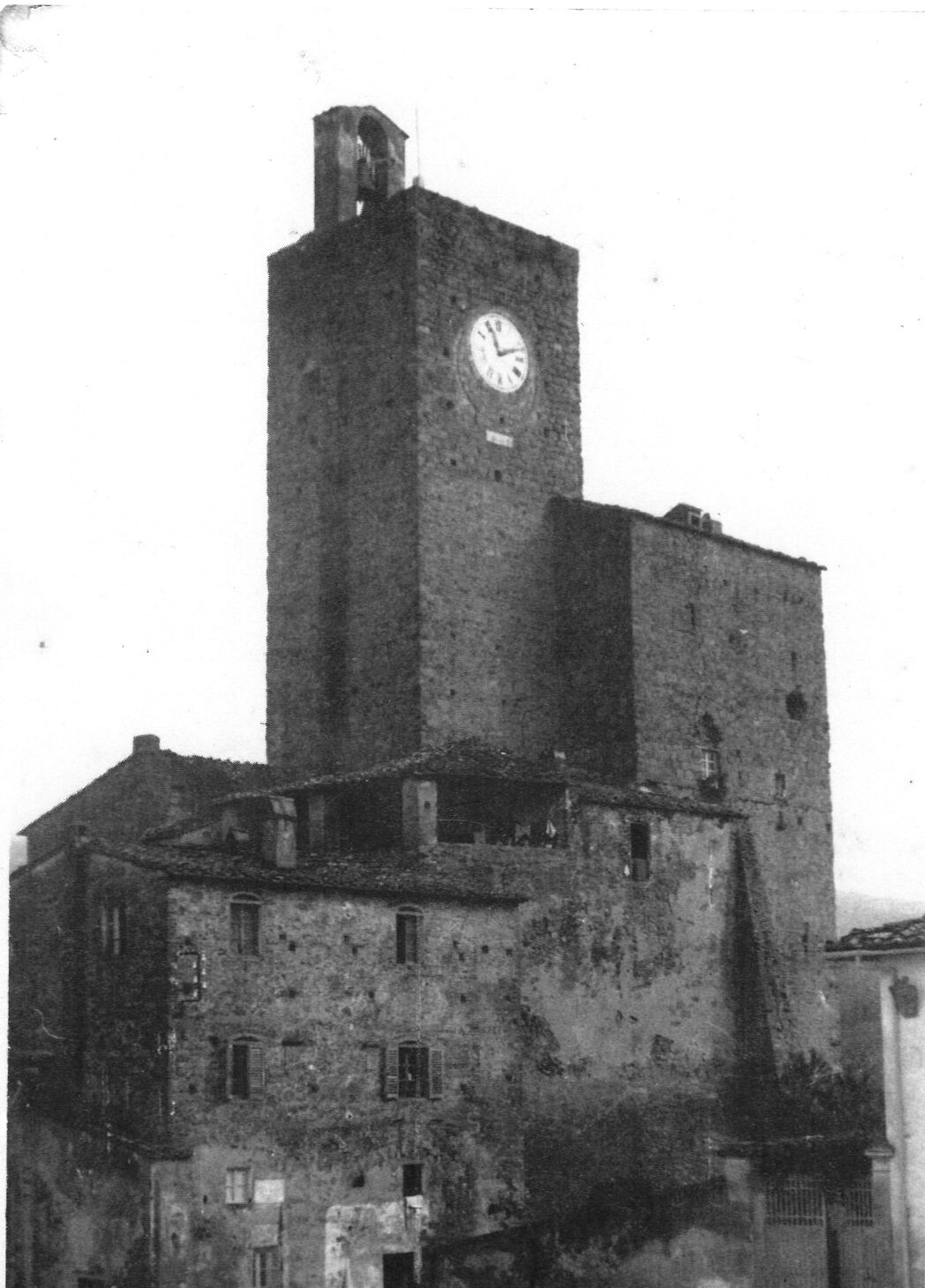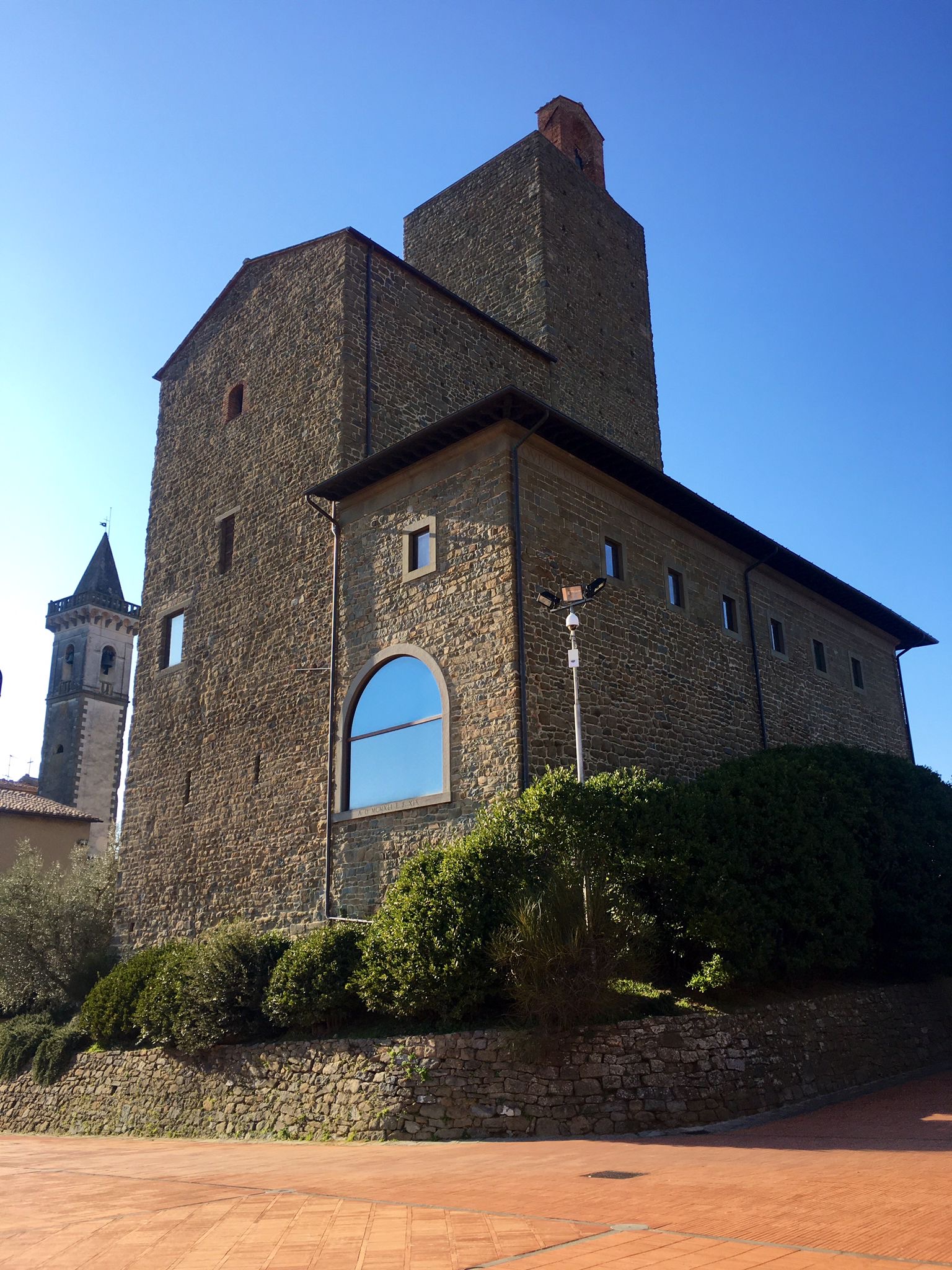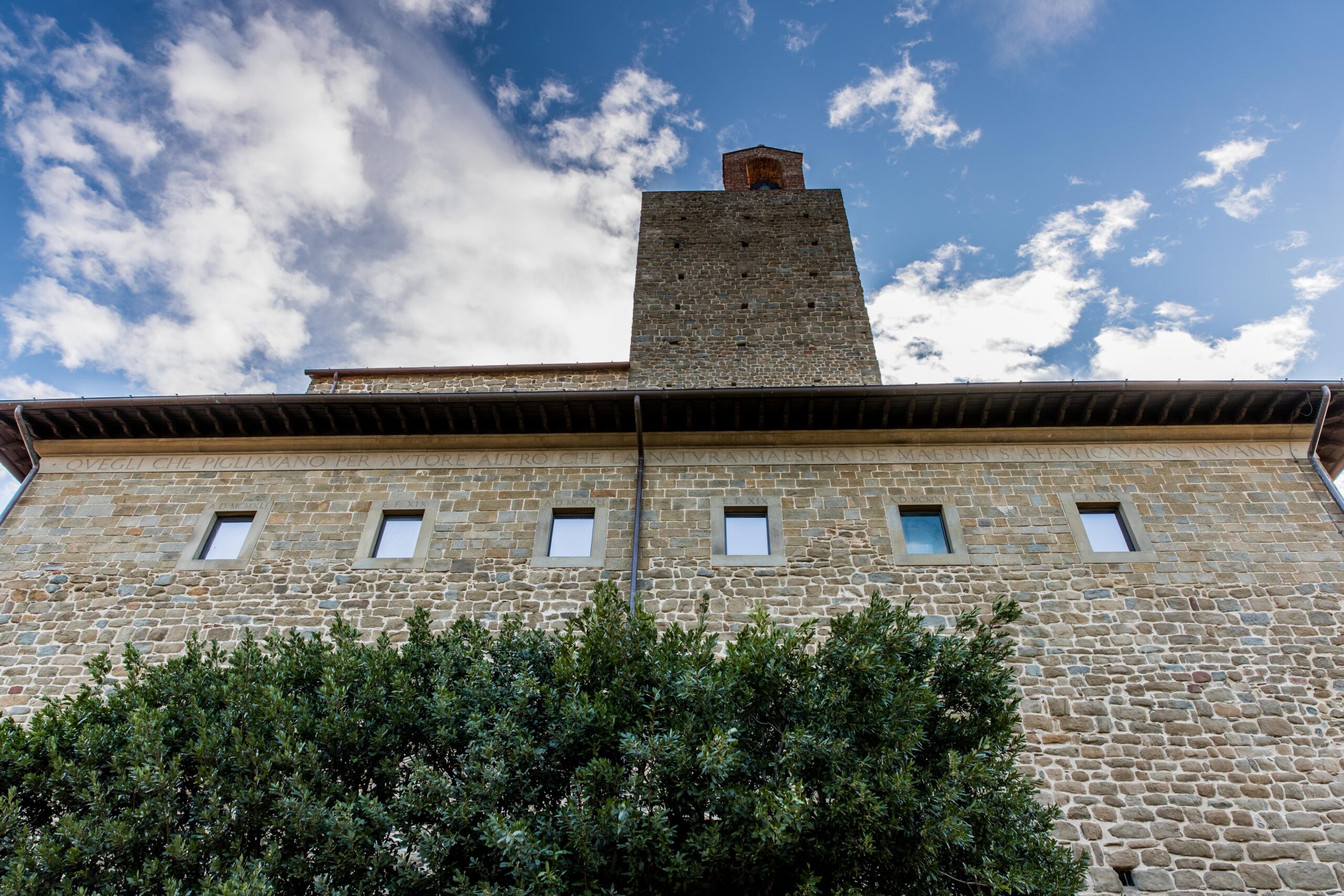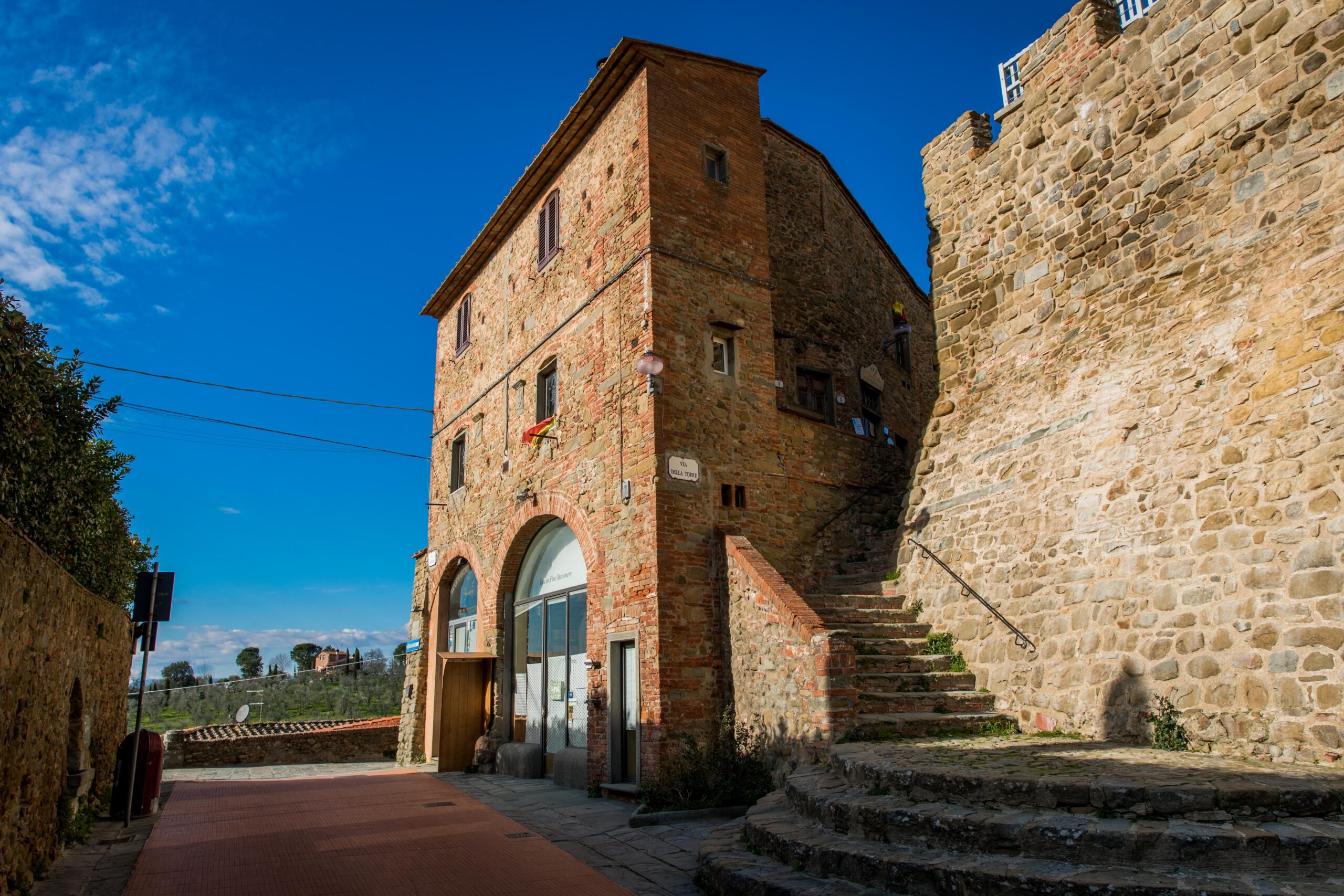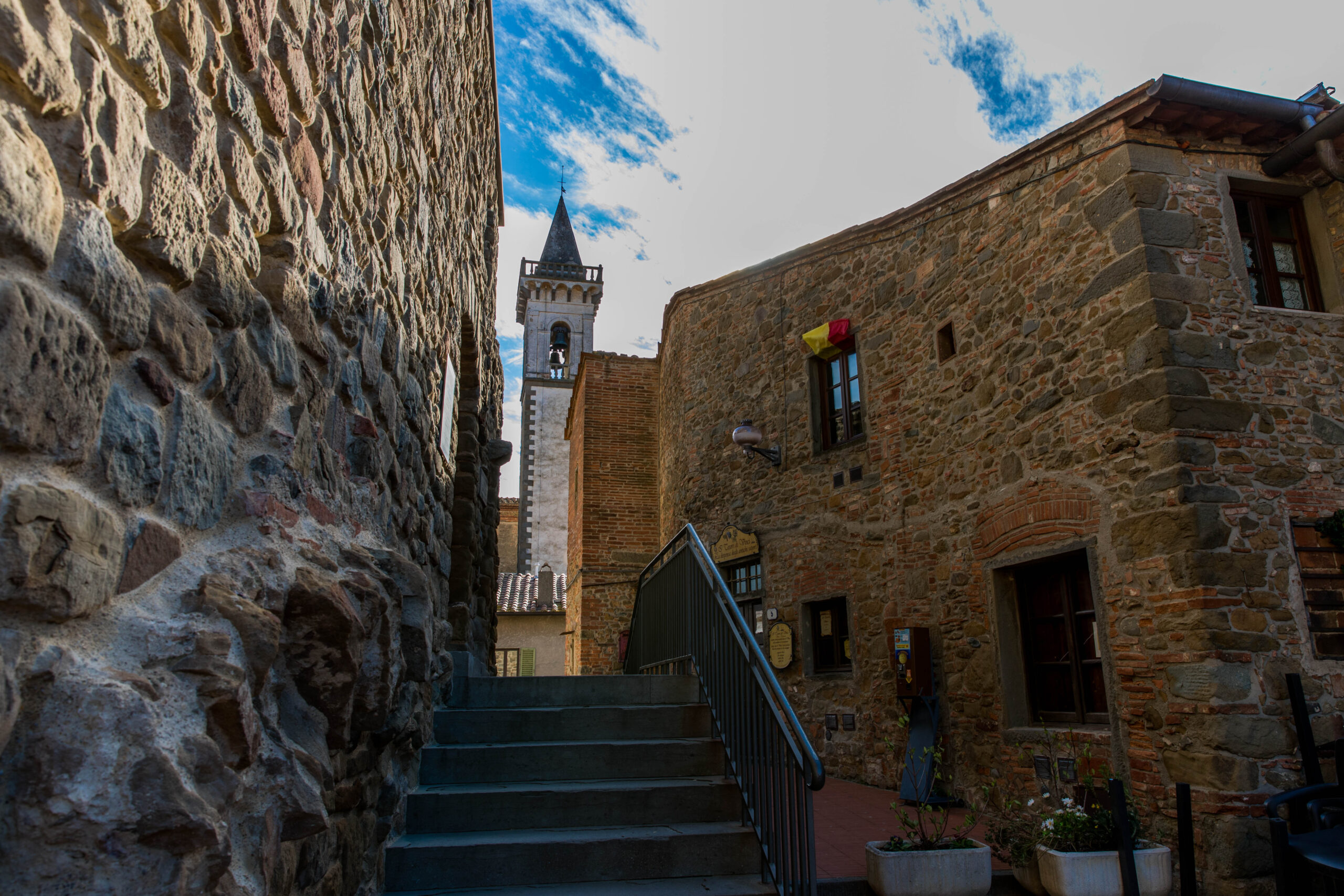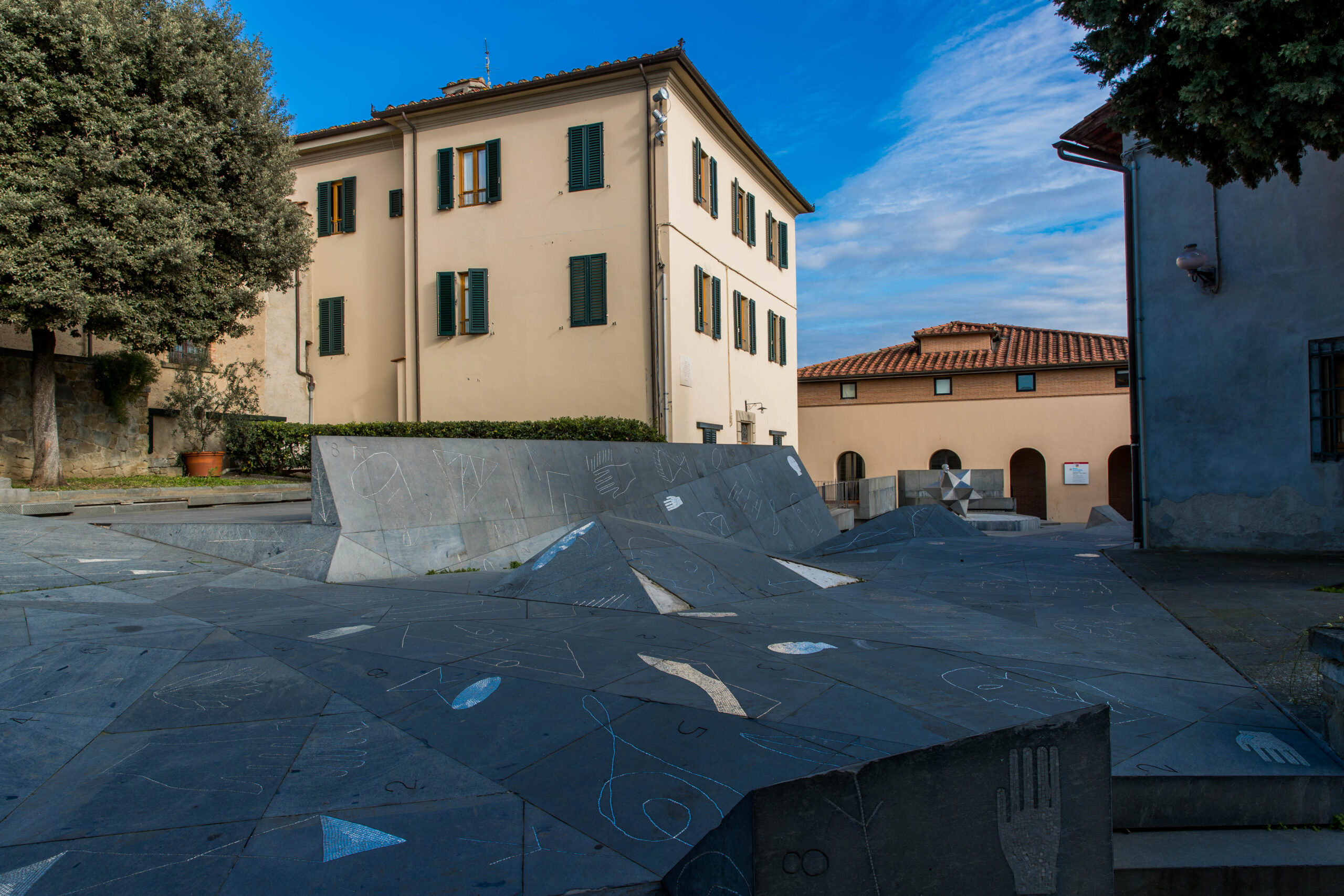The territory of Vinci and its history
Vinci lies along one of the roads that connect the Pistoia plain with the lower Valdarno, crossing the ridge of Montalbano. It is surrounded by countryside cultivated with terraced vineyards and olive groves. Its name derives from the vinco or vincastro, the willow tree whose branches turn red in autumn and whose soft, flexible twigs have traditionally been used to tie vine shoots after pruning.
Seen from above, the village resembles a large ship with two masts: the Castle of the Counts Guidi, built in the early Middle Ages around the year 1000, and the Church of Santa Croce, already documented by the 12th century. Because of its unique and unusual shape, the historic village is also known as the “Ship Castle” (Castello della Nave). In 1872, during a stay in Vinci with the Macchiaioli painter Telemaco Signorini, historian and Leonardo scholar Gustavo Uzielli described it as follows:
“The village of Vinci consists of two towers and a cluster of houses huddled around them. One of the towers is modern, the other ancient. The houses that belong to the old Vinci still reflect its former character; the newer ones resemble modern houses.”
Over the centuries, Vinci was contested by many cities, and in 1372 it became a Comune (municipality), with the Counts Guidi fortress serving as the residence of the Podestà (chief magistrate). Even today, in the Podestà’s Hall inside the castle, you can admire the coats of arms of the many magistrates who served here over time.
On April 15, 1452, Vinci gained worldwide fame as the birthplace of Leonardo da Vinci. The illegitimate son of the notary Ser Piero da Vinci and a woman named Caterina, Leonardo was born in the hamlet of Anchiano, about 3 km from Vinci. His birth was recorded by his grandfather Ser Antonio in an old notarial register:
“A grandson of mine was born, son of Ser Piero, my son, on April 15th, a Saturday at 3 o’clock at night. His name was Lionardo. He was baptized by priest Piero di Bartolomeo da Vinci…”
The next day, Leonardo was baptized in the Church of Santa Croce, in the heart of the village, which still preserves the original stone baptismal font. The Da Vinci family home, now lost, stood just inside the old gate that once led into the village, near what is now Via Roma. Leonardo moved to Florence with his father as a child, but returned to Vinci on May 3, 1478, to sign the contract (in the Podestà’s Hall) for the perpetual lease of the Vinci Mill, gifted to him by his uncle Francesco and father Ser Piero.
In 1919, on the 400th anniversary of Leonardo’s death, the idea of creating a museum in his honor was born.
Following the 1919 Leonardo commemorations, Count Giulio Masetti Dainelli of Bagnano, responding to the wishes of the people of Vinci, telegraphed the mayor to donate the Castle of the Counts Guidi, then his property, to the municipality:
“Wishing to contribute to the centenary honors, I kindly ask you to accept the donation of my Castle to establish the Leonardian Museum, hoping this will be welcomed by the local population.”
The castle was in a severe state of neglect at the time, but after several restoration efforts, it finally opened to the public during the 1939 Leonardo Celebrations, with the inauguration of the main exhibit called the “Vincian Itinerary.”
On April 15, 1952, during the 500th anniversary of Leonardo’s birth, the House of Leonardo’s Birth in Anchiano was officially inaugurated in the presence of President of the Republic Luigi Einaudi and Prime Minister Alcide De Gasperi. The following year, the Leonardo Museum (also called the Museum of Leonardo’s Machines) was officially opened, thanks to a donation of specially built models by IBM. (For more information, see Vinci di Leonardo – storia e memorie, Pacini Editore.)
In 1954, a Presidential Decree by President Einaudi granted Vinci the official title of “City”.
In 2019, during the 500th anniversary commemorations of Leonardo’s death, Vinci had the honor of welcoming President Sergio Mattarella, who inaugurated the temporary exhibition “At the Origins of the Genius” with these words:
“It stirs the emotions to think that, just like you, these were the first landscapes Leonardo saw, admired, and loved—landscapes that sparked his curiosity and lifelong pursuit of knowledge and understanding.”
